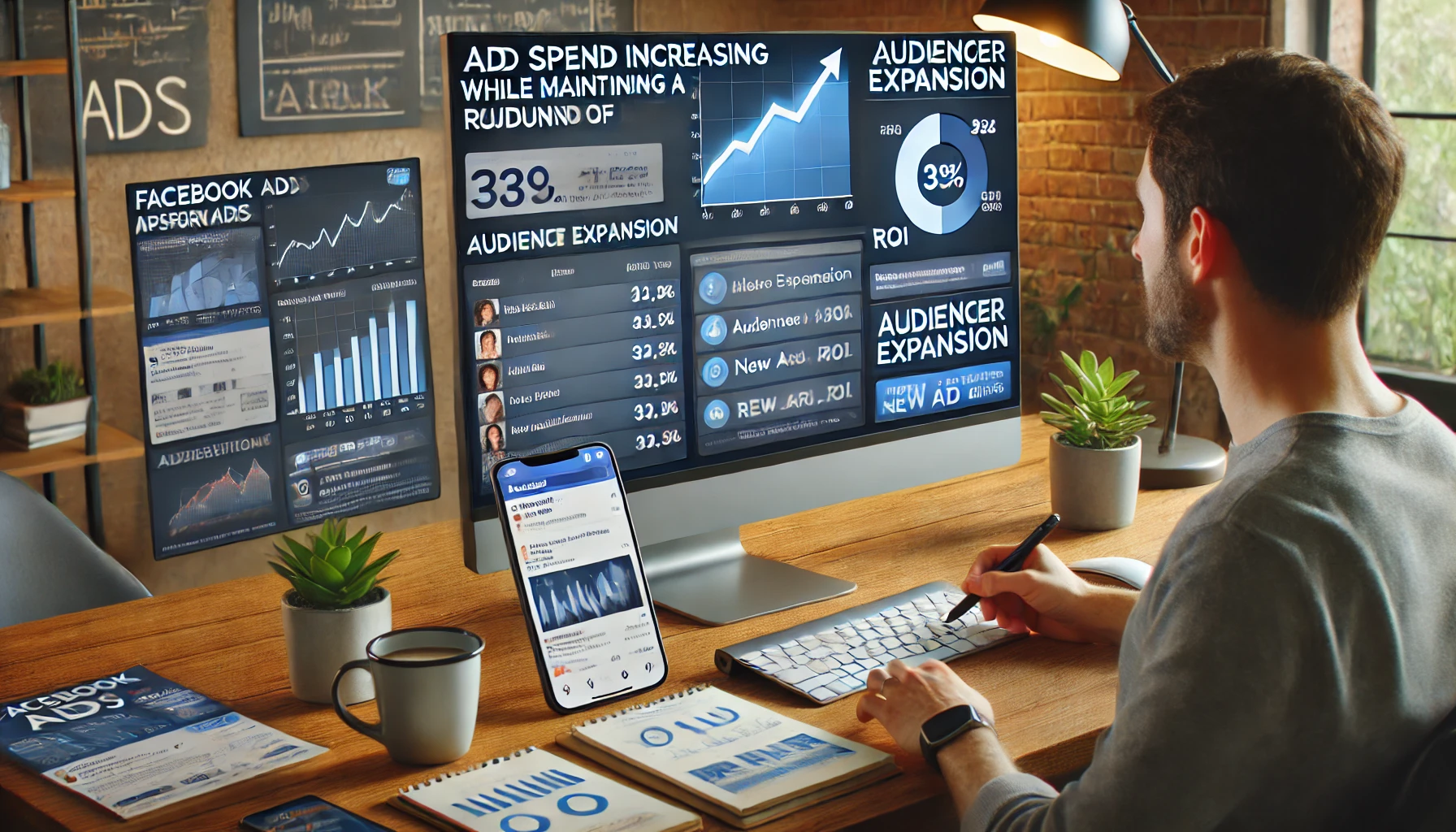Scaling your Facebook Ads can be one of the most challenging parts of managing successful ad campaigns. While it’s exciting to see an ad performing well, increasing the budget or expanding the audience can sometimes lead to higher costs, lower conversions, and reduced profitability.
If you want to scale your Facebook Ads while maintaining a high return on ad spend (ROAS), this guide will show you the best scaling strategies, mistakes to avoid, and how to ensure long-term success.
1. What Does Scaling Facebook Ads Mean?
Scaling Facebook Ads refers to the process of increasing ad spend, expanding the audience, or improving performance while keeping costs under control and ensuring consistent results.
There are two main ways to scale your campaigns:
- Vertical Scaling (Budget Scaling): Increasing the budget while keeping the same audience and ad structure.
- Horizontal Scaling (Audience Scaling): Expanding your audience, testing new ad creatives, and launching additional campaigns.
Both methods require careful testing and monitoring to avoid wasting money on ineffective ads.
2. Vertical Scaling: Increasing Budget the Right Way
One of the most common ways to scale a successful Facebook ad is by increasing the budget. However, if done too quickly, this can lead to higher costs per acquisition (CPA) and ad fatigue.
Best Practices for Vertical Scaling
📌 Increase the Budget Gradually
- Avoid making large jumps in budget. Instead, increase your ad spend by 20-30% every 3-5 days.
- This prevents Facebook’s algorithm from resetting the learning phase and maintains campaign stability.
📌 Use Campaign Budget Optimization (CBO)
- Facebook’s Campaign Budget Optimization (CBO) automatically distributes your budget to the best-performing ad sets.
- It helps prevent wasted ad spend and ensures efficient budget allocation.
📌 Monitor Performance Metrics Closely
- Keep an eye on key performance indicators (KPIs) such as CPA, ROAS, Click-Through Rate (CTR), and Cost Per Click (CPC).
- If performance starts declining, pause or adjust the ad before spending more money.
📌 Avoid Scaling Too Quickly
- If you double your budget overnight, Facebook’s algorithm may reset and re-optimize your campaign, causing performance fluctuations.
3. Horizontal Scaling: Expanding Reach and Diversifying Campaigns
Horizontal scaling involves expanding your audience and testing new ad variations to maintain performance and avoid ad fatigue.
Best Practices for Horizontal Scaling
🎯 Expand to Lookalike Audiences
- If your current audience is performing well, create Lookalike Audiences based on:
✅ Website visitors
✅ Engaged users (people who interacted with your Facebook page or Instagram)
✅ Past buyers or high-value customers
🎯 Target New Audience Segments
- Test new interest-based audiences and demographics that share similarities with your best customers.
- Example: If you’re targeting entrepreneurs, try expanding to freelancers or startup founders.
🎯 Launch Multiple Ad Creatives
- Ad fatigue happens when your audience sees the same ad too often.
- Prevent this by creating multiple versions of your ads with different images, videos, and copy.
🎯 Try Different Ad Placements
- Facebook allows ads to be shown on:
✅ Facebook News Feed
✅ Instagram Feed & Stories
✅ Audience Network
✅ Messenger - Test different placements to see which performs best and allocate more budget to high-performing ones.
4. Retargeting: The Key to Scaling Profitably
Retargeting helps you convert warm leads who have already interacted with your brand. These users are more likely to convert than cold audiences.
Best Retargeting Strategies
🔥 Retarget Website Visitors – Show ads to users who visited your site but didn’t take action.
🔥 Cart Abandonment Ads – Remind users who added items to their cart but didn’t complete the purchase.
🔥 Video Viewers – Retarget people who watched at least 50% of your video ads.
🔥 Email List Retargeting – Upload your email list and target past customers with special offers.
Retargeting campaigns usually have higher conversion rates and lower CPA, making them essential for scaling successfully.
5. Scaling with Automated Rules
Facebook offers Automated Rules that help scale ads without needing constant manual adjustments.
How to Set Up Automated Scaling Rules
✅ Increase Budget When ROAS is High
- Set a rule to increase the budget by 20% if ROAS is above 3x.
✅ Pause Low-Performing Ads
- Automatically pause ads if CPA exceeds a certain limit or CTR drops below a threshold.
✅ Duplicate Winning Ads
- When an ad is performing well, duplicate it and increase the budget to scale without affecting performance.
6. Avoid These Common Scaling Mistakes
🚫 Scaling Too Fast – Large budget increases can trigger the learning phase reset.
🚫 Ignoring Performance Data – Always track KPIs before making changes.
🚫 Not Testing New Creatives – Ad fatigue can cause performance to decline over time.
🚫 Overlapping Audiences – Running multiple ads targeting the same audience can increase costs.
🚫 Neglecting Retargeting – Cold traffic is harder to convert; retargeting helps boost sales.
7. Monitoring and Optimizing for Long-Term Success
Scaling Facebook Ads is not a one-time task—it requires constant monitoring and adjustment.
🔹 Regularly review performance metrics in Facebook Ads Manager.
🔹 Reallocate budget to the best-performing campaigns.
🔹 Test new audiences, creatives, and placements to maintain growth.
By following these scaling strategies, you can grow your ad campaigns without losing profitability and ensure long-term success! 🚀
